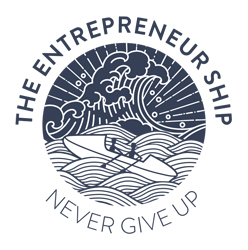'The Entrepreneur Ship'
Lily has two, very small, watertight sleeping enclosures fore and aft and is designed to self-right in the event of a capsize. Being so small, she is built for safety, not comfort, and will be packed with high-tech electronics such as solar panels, navigation and satellite communications equipment. In addition, we will have a water-maker, food supplies, a life raft and a bucket. As you can imagine, the bucket will be an essential piece of equipment, as there is no lavatory on the boat! If the weather turns against us, we will have a drogue, a kind of underwater parachute that we will deploy to stop us from drifting too far in the wrong direction. Notwithstanding this, it is quite likely that we will have days when the boat goes backwards, a soul-destroying prospect but a reality that is likely to be forced on us by mother nature.
